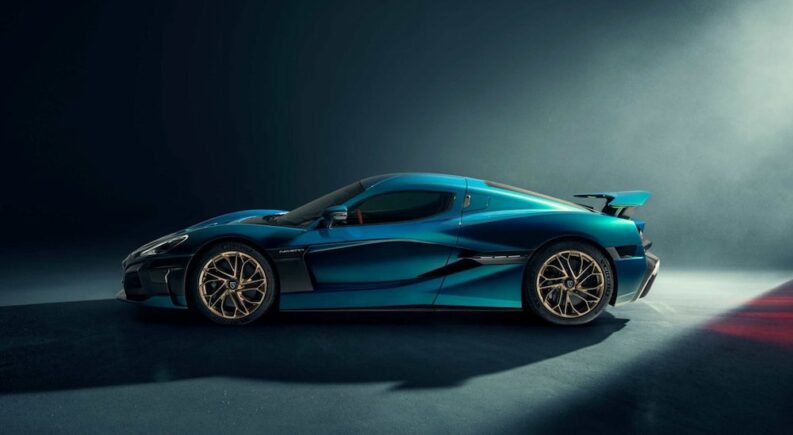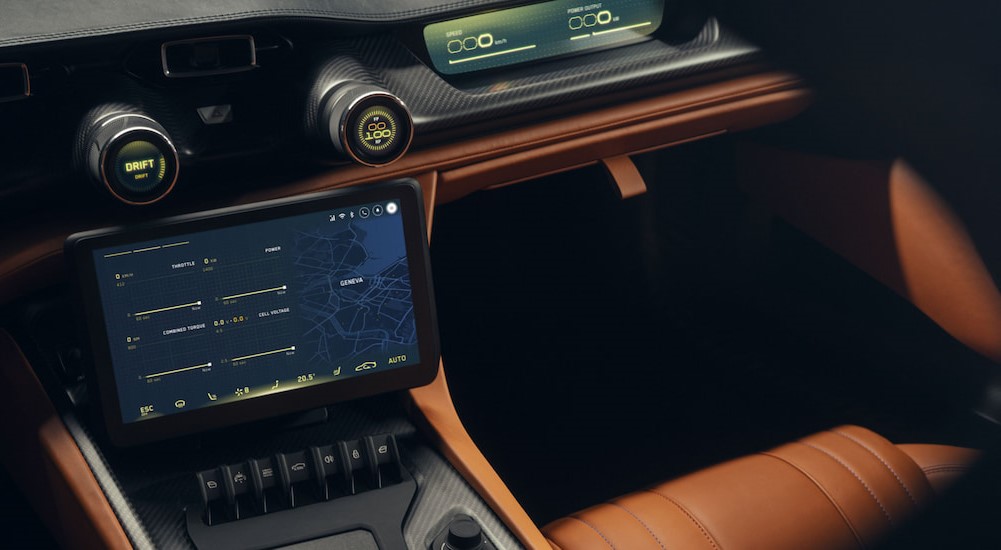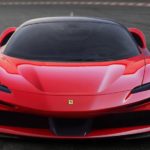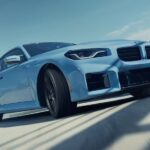It’s really hard to choose the “coolest” supercar. By definition, they are superior to the daily driver production cars we see each day, at least in terms of performance. When it comes to soccer practice carpools or fishing trips with your buddies, they might not be the ideal pick, especially if you’re trying to keep your million-dollar car in pristine condition, but that’s not the point.
All supercars are united by their ability to go very, very fast while being impeccably and immaculately engineered to do so. The mechanics of a supercar are a perfect blend of art and science, and watching them move is breathtaking. So, really, all supercars have earned their “cool” badge. But while nearly everyone would graciously accept an invitation to drive nearly any supercar, we all have a not-so-secret favorite. For me, it’s the Rimac Nevera, and here’s why.
Which One Is Rimac?
It’s likely you haven’t seen a Rimac in person yet, especially if you live in the United States. Formed in 2009 by Mate Rimac, Rimac Group develops highly advanced technology, components, and engineering solutions for electric vehicles. Specifically, it provides these services to brands like Porsche, Aston Martin, Pininfarina, and Koenigsegg. The Pininfarina Battista, in fact, is very similar to the Rimac Nevera due to the shared technological elements.
Porsche and Rimac have jointly realigned the Bugatti hypercar division to a separate company, Bugatti Rimac, as of 2021. From there, Bugatti Rimac has recently formed an agreement with Volkswagen Group of America for exclusive importer rights to Bugatti and Rimac vehicles.
If you’re wondering why this Croatian supercar manufacturer hasn’t been full blast on your radar, it’s because it hasn’t really established a presence in the USA. However, Mate Rimac assures us this will change soon, stating in a press release:
“For both the Bugatti and Rimac brands, the USA is the strongest single market in the world, so it’s important that we curate a sales and ownership experience befitting the extraordinary cars that we’re delivering to customers. The alignment and cooperation with Volkswagen Group of America will allow our dealer network in the States to evolve with the enormous experience and resources available to them, allowing us to combine all the best bits of a mass market sales operation with the bespoke, customer-centric special touches that have become a hallmark of both Bugatti and Rimac brands.”
Personally, I cannot wait to hear the reviews from American supercar drivers once the Nevera makes it to the States. Of course, the model is limited to a production series of just 150, so it might take a minute or two.
Why the Nevera? What Makes It Cool?
To start with, the name “Nevera” is pretty cool. It’s named after a type of fast and powerful Mediterranean storm that is known for massive bolts of awe-inspiring lightning. In other words, the exact type of instant and explosive response one can expect from the Rimac supercar.
The art and science behind the Nevera are equally impressive. Each wheel has its own dedicated motor with an independent inverter and gearbox, providing it with exactly the amount of torque needed to grab the track and launch forward. The result is an incomparable amount of control from the cockpit, resulting in a practically instant, if not nearly predictive, response to driver cues.
If that doesn’t sound absolutely glorious, consider the power provided. Each front motor is rated for 307 hp and 200 lb-ft of torque, while each rear motor provides a maximum of 612 hp and 664 lb-ft of torque. The result is an official combined output of a staggering 1,914 hp and 1,741 lb-ft of torque, making the Nevera the third most powerful production car of all time. At this point, I (along with most American drivers) can only imagine what that feels like from behind the wheel, but I imagine it’s a lot like cutting through butter with a hot knife, slicing through the surface friction and air resistance like physics is just some whimsical thing Newton came up with as a party trick.
If a top speed of 258 mph isn’t enough, the Nevera is also extremely quick off the line. It accelerates from zero to 60 mph in less than two seconds (1.74 seconds, to be precise) and has a quarter-mile time of just 8.25 seconds. If you can wait an extra second, you can watch the Nevera accelerate from zero to 185 mph in 9.22 seconds. Furthermore, it has a range of 304 miles in European WLTP testing. Remember––it’s all-electric. You’re paying nothing at the pumps for the privilege to fly.
The Impeccable, Immaculate Part
Another great thing about the Nevera is that––with the exception of some HVAC components––it is entirely designed and crafted by Rimac employees at the company headquarters in Croatia. That means that every piece, part, and program considered for the Nevera is created with the rest of the vehicle in mind. As evidenced by the fact that Rimac provides many components to other automotive manufacturers, supercars are frequently more of a collaboration than designers and engineers may like to admit. This is not the case in the Nevera.
One example of this impressive holistic engineering feat is the monocoque core structure that forms the Nevera. Made of carbon fiber with a bonded carbon roof and rear subframe, this core is not only incredibly strong but deliberately lightweight to provide ideal aerodynamics to each and every Nevera model. Drivers also have the opportunity to tweak and trim their supercars’ handling and response by engaging the seven different drive modes. This includes a Sport mode that tightens the throttle and brakes for a sharper ride, a Range mode that makes the most of available energy, and a Drift mode that shifts available torque to the rear wheels.
In addition to the recognizable technology features of infotainment, phone connectivity, and navigation, the Rimac Nevera is equipped with screens that provide information regarding real-time torque distribution, a g-meter, and other driving accomplishments, such as quarter mile times and acceleration. The Nevera also includes an AI driver coach, which provides real-time recommendations for drivers. It uses information gathered from 12 ultrasonic sensors, 13 cameras, and six radars incorporated throughout the body of the car.
Keep an Eye on the Storm
Since the Nevera is limited to 150 models, it’s unlikely that many drivers will ever have the opportunity to know exactly what this level of power and control feels like. Still, any supercar enthusiast can consider the facts and figures and hope that at least one of those 150 lucky drivers takes the opportunity to share all of their findings. Videos, blogs, their own television show…any of these would be an acceptable substitute for the actual experience of driving a Rimac Nevera.
At the same time, it’s still very possible that Americans will have the opportunity to enjoy driving a Rimac in the near future. With the partnership between Bugatti Rimac and Volkswagen Group of America and Mate Rimac’s encouraging words, it does appear that an electric supercar bridge is about to be built between Croatia and America. Hopefully, there’s no speed limit on that bridge.





